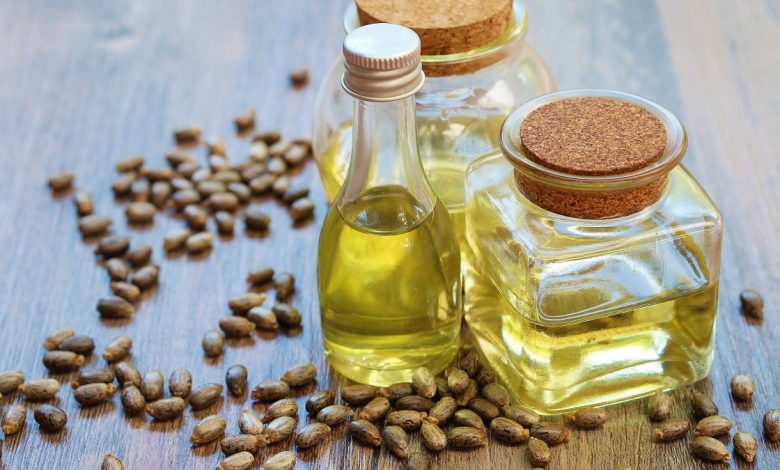Castor oil: benefits and indications

If you are told about castor oil, you will immediately think about hair care. She does wonders on hair, but not only. Discover the indications of this vegetable oil and how to use it.
Castor oil is a non-food vegetable oil, sometimes also called “beaver oil”, obtained from castor seeds. What are its properties and what cosmetic uses are made of it?
Castor oil: what exactly are we talking about?
The first thing to know: Castor oil is produced from common castor, a shrub (of the Euphorbiaceae family) found in tropical and subtropical climates, and which is notably cultivated in Africa, the Middle East, Oceania, and South America.
The common castor (or Ricinus communis, its scientific name) can be recognized by its green or red leaves that look like maple leaves. Ricinus communis can measure up to 3 meters high, or up to 10 meters high in its original environment.
Namely. In Latin, the word “ricinus” means “tick”. This is because the seeds of the common castor are red and round, and can look like blood-soaked ticks.
A toxic plant not to be ingested
Careful! Although common castor is quite common in massifs and flower beds, it is a very toxic plant. In fact: in most the plant (and especially in the seeds), there is ricin, a molecule (which is a glycoprotein lectin, more specifically) that has the power to infiltrate into the cells of the body and prevent them from making the proteins they need to live.
It is estimated that ingestion of 3 castor beans can be fatal to a child or a pet: for an adult, 4 beans can cause serious poisoning, requiring hospitalization.
How do you get castor oil?
Castor vegetable oil is obtained by cold pressing the seeds of common castor (Ricinus communis): this process is followed by filtration to remove the ricin. Note: castor seeds are composed of 40% to 60% oil.
Castor oil: what are its properties and benefits?
The active ingredient of castor oil is ricinoleic acid, which makes up about 85% of the oil: this oleic acid derivative has laxative, antibacterial, antifungal, and anti-inflammatory properties… Castor vegetable oil is also concentrated in “good” fatty acids (omega-6 and omega-9), which gives it softening and repairing properties.
When to apply it? A vegetable oil with a thousand virtues for the hair
The main indications for castor oil are therefore:
Speed up hair growth. To treat the loss of hair mass and/or to help the hair grow, a few drops of castor vegetable oil are heated in his hands and the scalp is then massaged for 2-3 minutes, 2 to 3 times a week. This “hair mask” is then left on overnight before washing your hair in the morning.
Bring flexibility to the hair. In the case of dry and/or brittle hair, a few drops of castor vegetable oil are heated in his hands and it is applied to “straighten” the hair, lock by lock, from the half-length to the ends. Attention: do not “drown” your hair in oil! The hair is then left to stand for at least 1 hour before washing.
Discard dandruff. To sanitize a scalp subject to dandruff, a head massage with a few drops of castor oil is carried out every evening.
Relieve constipation. To revive intestinal transit expressly (because castor oil is very effective: it acts in only 4 to 8 hours), one takes 1 to 2 tbsp of this vegetable oil in the morning, on an empty stomach. Caution: Oral castor vegetable oil is contraindicated in patients with sensitive bowels (e.g. Crohn’s disease) and should not be used for more than 2 days in a row. To circumvent this contraindication, it can also be used in a band-aid: a few drops are made to penetrate the lower abdomen, 2 to 3 times a day, for a maximum of 2 days.












